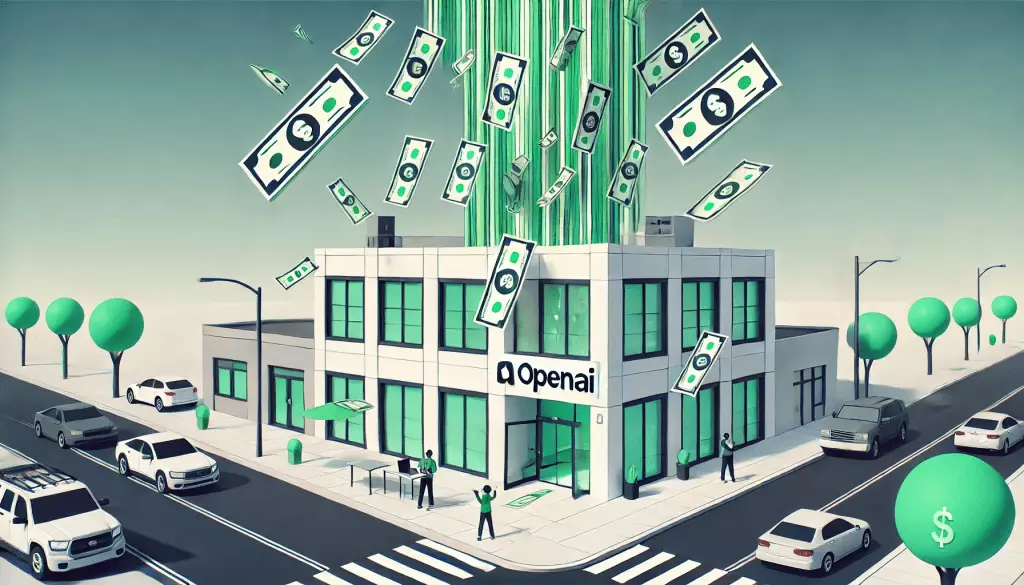The tech landscape is dynamic, and in recent months, few developments have captured as much attention as OpenAI’s latest financial boost amidst significant internal shifts. OpenAI, renowned for its advanced AI tools, has announced a staggering $6.6 billion in new funding, raising its total company valuation to an astronomical $157 billion, marking this round as the largest venture capital funding in history. This article will delve into the implications of this funding, the skepticism it faces, and the broader competitive landscape of the AI industry.
The recent influx of capital has left many in the industry both surprised and compelled to reevaluate OpenAI’s direction. The funding round, led by Thrive Capital and supported by giants like Nvidia and Microsoft, illustrates the strong financial backing OpenAI commands. This massive investment is expected to enhance its operational capabilities significantly, enabling the company to bolster its AI research, increase computational power, and develop additional resources to tackle complex problems. OpenAI stated that its ChatGPT platform enjoys over 250 million weekly unique users, a statistic that underscores its widespread adoption and popularity.
However, beneath this optimistic façade lies a growing chorus of critics. Concerns about OpenAI’s future trajectory have been amplified by a series of high-profile executive exits, which raise questions about the company’s leadership stability and strategic direction. Critics, including writer Ed Zitron, have pointed out potential vulnerabilities in OpenAI’s business model, particularly its reliance on subscription revenue from ChatGPT rather than diversifying its income through API usage or licensing. These concerns resonate within the tech community, sparking discussions about whether OpenAI can maintain its momentum in a rapidly evolving AI landscape.
Further fueling skepticism are the troubling associations tied to compelling investment channels. Reports linking OpenAI with SoftBank—known for some less than stellar investments—add a layer of apprehension regarding the company’s funding strategies. Additionally, Apple’s purported decision to abstain from investing in OpenAI raises eyebrows, particularly after the resignation of the former CTO, Mira Murati, which may suggest deeper issues at play within the leadership structure.
Moreover, the competitive environment surrounding AI is intensifying. Observers are now questioning OpenAI’s maneuvers to ensure exclusivity among its investors, disallowing them from supporting rival companies like Anthropic or Elon Musk’s xAI. These actions reveal a defensive posture from OpenAI, indicating a wariness of emerging competitors that threaten to disrupt its market position. Musk’s characteristic candor has fueled this narrative, as he openly chastised OpenAI on social media, labeling the firm as “evil,” a bold claim that adds to an already tumultuous public image.
The AI arena is brimming with competing models, with newcomers like Liquid AI introducing unique non-transformer models. Industry heavyweights such as Google and Anthropic are also releasing advanced models tailored for both enterprise and consumer use. Meanwhile, organizations like Meta and Alibaba continue to exert pressure by offering powerful open-source alternatives at no cost. In contrast, OpenAI remains a mainstay in performance metrics, consistently updating its offerings to maintain its edge, such as with the recent launch of the o1 preview series.
Despite the criticisms and competitive pressures, OpenAI still exudes an air of resilience. Fueled by a substantial influx of capital, the company seems well-positioned to develop new frameworks and tools that promise to facilitate innovation across various applications. Developers utilizing OpenAI’s models can take solace in the stability provided by this backing, which is crucial for sustaining product development in a landscape defined by rapid change.
A significant point of interest lies in OpenAI’s Custom GPT Store, which has garnered potential for monetization and user engagement since its launch. The model permits ChatGPT Plus users to craft and share tailored iterations of ChatGPT, paving the way for a new ecosystem where specialization can thrive. CEO Sam Altman has hinted at future revenue-sharing initiatives for creators within this space. The question now is whether OpenAI can realize its potential in enabling profitable avenues for these developers, especially now when the funding coffers have been replenished.
As OpenAI navigates simultaneous waves of investment, internal turmoil, and competitive encroachment, it’s crucial to keep monitoring how these factors will shape its strategy moving forward. Industry watchers are eager to see if the company can leverage its resources not only to remain at the forefront of AI technology but also to foster a culture of innovation among its user base.
While OpenAI stands tall with its significant funding, facing introspective inquiries and external pressures is inevitable. The company’s success may well depend on how effectively it can harness this capital to empower not only itself but the broader AI community it seeks to lead.


Leave a Reply